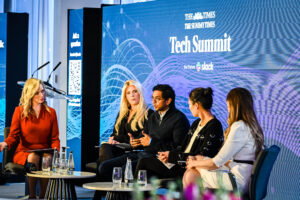Over the last two years, the COVID-19 pandemic up-ended family life.
Lockdown didn’t just press “reset” on familiar domestic patterns. For many, it prompted a re-evaluation of chaotic lifestyles, a change in behaviour.
The truth, however - the modern family was already in flux, the traditional concept of the nuclear unit already outmoded. The pandemic simply forced us to take notice.
Either way, for marketers, the new reality matters, because any recalibration of family dynamics should also force a re-assessment of how brands enter into the family environment. So how should marketers’ approach change?
Relationships redefined
At Wavemaker UK, we partnered with News UK on a research study, Modern British Families, asking parents from its reader panels survey questions to understand more about families and COVID-19 life. Amongst the findings:
- Parents (and extended care-givers) are now having a rich array of life conversations with children, on a range of modern anxieties from diet and money to mental health and sexuality. But these are largely impromptu rather than deliberate, leaving space for additional guidance.
- In an era of blurred boundaries and redefined roles, dependable rhythms - of the day, the year, of seasonal celebrations - still bind together both households and societies. Such occasions can serve as valuable anchor points in a fragmented world.
- Lockdown revelations showed families how they can be better - the value of exercise, of cleaner air, of learning, of human connection. This reassessment has solidified a wave of purposeful new intention - the quest for better - which brands should aim to support.
- Climate change, cultural tension, economic challenges, the cost of education and growing awareness of mental health have created layers of anxiety. Parents are more likely to put their children’s happiness above success. But navigating a complex world still requires a guide.
The family network, rebooted
How brands get to become that guide is fascinating.
Conventional “fragmentation” narratives have it that family members - engaged in individualised mobile screen time despite sharing the same home, even room - are now disconnected, something that would pose a challenge to domestic influence ambitions.
In truth, what our research shows is that families are becoming more connected than ever.
There are more connection points within the family than ever. Enabled by technology, rather than separated by it, families are stronger than ever.
Accessing the family gets complicated
Still, reaching the right target within a family must nevertheless be rebooted.
Media planning can no longer be about speaking to the mum as the sole purchase decision-maker. Nor can it just be about invoking children’s “pester power”. In the new world, both are one-dimensional views.
It is true that the fallback of reaching all family members at the same time - through shared family experiences like The X Factor - is waning.
Now marketers must account for a rich tapestry of family media modalities - sometimes simultaneous experiences, sometimes asynchronous; sometimes appealing to a specific family avatar, sometimes speaking to both in a single creative.
Composites at the kitchen table
In other words, campaigns, like families themselves, must be a jigsaw.
To be the guide that individual householders need, brands must arm different family members with different pieces of information, through the appropriate device and channel.
These are inevitably composited into a whole through an ingenious such channel - the family network. Much as we may fear being torn apart, the sharing of individualised consumption, of views and preferences, is still a fundamental family rhythm - whether around the dinner table or in a WhatApp group.
Certainly, addressable media can help brands zero-in on their preferred audience. But the new planning job is all about assembling these pieces.
Assembling the jigsaw
To do so, we need to get ever better at really understanding audiences, at understanding modern British families.
I think the way to do so, just like the modern family itself, is no longer one-dimensional. For planners, comprehending the family composite can no longer come from quantitative or qualitative analysis alone.
Rather, what is required is a new age in media insight, one that combines both.
That is what we at Wavemaker UK set out to do with Modern British Families.
Two-pronged understanding
For our study, we used a multi-stage, mixed-methodology approach using in-depth qualitative research and a robust quantitative survey leveraging News UK’s reader panels, which total 21,600 readers.
Quantitative: We surveyed 500 families with children aged 12+ in November 2020, exploring family dynamics with a focus on the role of the children in decision-making, the impact of COVID-19 on family life as well as the types of conversations that were both common and less common these days in family life.
Qualitative: We also conducted in depth interviews with families from across the UK capturing both mother and father perspectives whilst we furthered our understanding of family dynamics by using ethnography to observe child and parent interactions close up.
As you can see from our collection of analysis of the findings, it is this twin approach which can really begin to depict the family network in a way that a single lens could never do.
At Wavemaker UK, our planners agree – empathising with this new-look unit is as critical as it can be complicated.
Methodology:
News UK leveraged its reader panels (The Sun has 7,400 members and The Times has 14,200 members). Audiences with a child aged 12 or over were sent a 10-minute questionnaire in November 2020, asking about the role of the children in decision-making, impact of COVID-19 on family life as well as the types of conversation they were having with their children. The questionnaire received 202 responses from The Sun readers and 239 responses from The Times readers.









